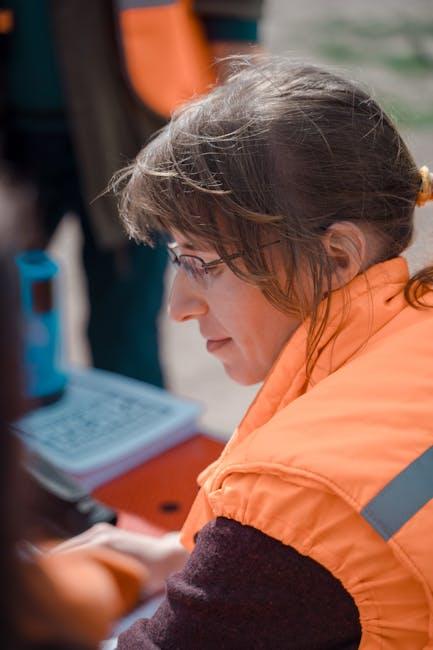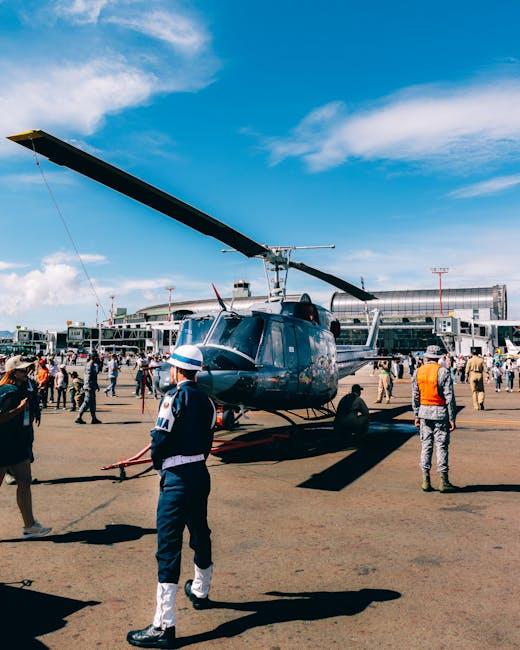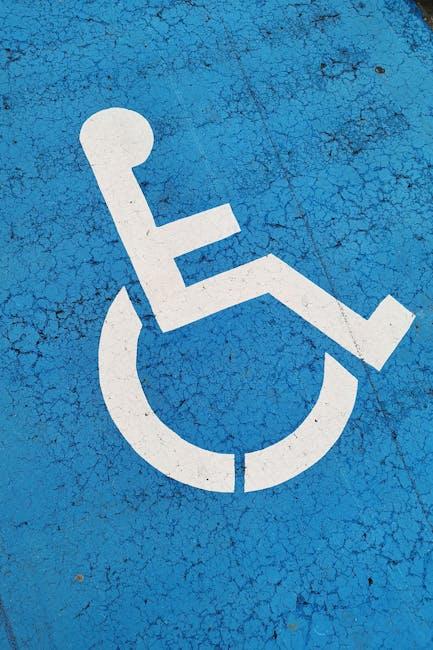In the vibrant tapestry of human connection, events serve as pivotal moments—gatherings where ideas spark, celebrations unfold, and communities unite. Yet behind every seamless festival, conference, or concert lies a crucial foundation: safety. Event safety guidelines are the unseen framework ensuring that joy and excitement never come at the expense of well-being. This article explores the essential principles and practical measures that transform any event from a mere occasion into a secure, memorable experience for all. Whether you’re an organizer, participant, or venue manager, understanding these guidelines is the first step toward crafting events where safety and success walk hand in hand.
Table of Contents
- Event Safety Planning and Risk Assessment Essentials
- Creating Clear Communication Channels for Emergency Situations
- Effective Crowd Management Strategies and Best Practices
- Ensuring Venue Safety Compliance and Accessibility
- Implementing Health and Sanitation Protocols for Large Gatherings
- Training Staff and Volunteers for Preparedness and Response
- Q&A
- To Conclude

Event Safety Planning and Risk Assessment Essentials
Effective preparation begins with a thorough evaluation of potential hazards. Identifying risks early allows organizers to put strategic measures in place that minimize threats and protect both participants and staff. A comprehensive review includes assessing environmental factors, crowd control challenges, and emergency access routes. Prioritizing clear communication channels ensures that every team member knows their role should a situation arise. With a checklist in hand, decision-makers can systematically address each component, fostering a safer event environment.
- Site inspection: Analyze terrain, exits, and potential bottlenecks
- Weather forecasts: Prepare for changing conditions
- Staff training: Equip personnel with safety protocols
- Emergency response plan: Establish clear evacuation and medical aid procedures
Risk evaluation also takes into account the likelihood and impact of various emergencies. By categorizing risks as low, medium, or high, organizers can allocate resources where they are most needed. Ensuring sufficient security presence, medical support, and signage improves the overall safety framework. Collaboration with local authorities and consistent drills can further enhance readiness, turning uncertainty into confidence.
| Risk Type | Probability | Mitigation Strategy |
|---|---|---|
| Severe Weather | Medium | Monitor live updates and have sheltered zones |
| Crowd Surge | High | Designate clear pathways and control entry points |
| Medical Emergency | Low | On-site first aid teams and rapid response vehicles |

Creating Clear Communication Channels for Emergency Situations
To ensure swift and effective responses during emergencies, it’s essential to establish multiple, clearly defined communication channels accessible to everyone involved. This can include dedicated radio frequencies, SMS alerts, mobile apps, and physical notice boards stationed strategically around the event space. Each channel should have an assigned point person responsible for monitoring and disseminating information, ensuring no critical update gets overlooked. Additionally, testing these systems during pre-event drills guarantees seamless functionality when every second counts.
Key elements for effective emergency communication include:
- Clearly marked contact points for security and medical teams
- Simple, jargon-free messaging templates ready for quick adaptation
- Backup communication tools to counteract potential technology failures
- Real-time two-way communication to verify instructions and feedback
| Communication Channel | Primary Use | Backup Option |
|---|---|---|
| Two-way Radios | Security Coordination | Mobile Phones |
| SMS Alert System | Attendee Notifications | Email Broadcast |
| Social Media Updates | Public Announcements | Event PA System |
| Mobile App Alerts | Real-Time Instructions | Posted Signage |

Effective Crowd Management Strategies and Best Practices
Implementing well-structured crowd management techniques is essential to maintain safety and ensure a seamless event experience. A comprehensive approach involves anticipating crowd behavior and creating clear, accessible pathways to manage foot traffic efficiently. Utilizing barriers and signage strategically can guide attendees while preventing overcrowding in vulnerable zones. Equipping staff with real-time communication tools allows for quick response to emerging situations, minimizing risks before they escalate.
Successful crowd control also hinges on thorough planning and continuous monitoring. Key practices include:
- Pre-event risk assessment: Evaluate capacity limits and identify potential choke points.
- Effective staff training: Empower team members to handle emergencies calmly and professionally.
- Dynamic crowd flow adjustments: Adapt layout or entry/exit points based on live attendance data.
- Clear communication channels: Provide attendees with timely updates through screens, announcements, or apps.
| Strategy | Benefit | Priority Level |
|---|---|---|
| Barrier Placement | Controls movement & prevents congestion | High |
| Staff Training | Ensures quick, effective response | Critical |
| Real-time Monitoring | Identifies issues early | High |
| Clear Signage | Improves navigation & reduces confusion | Medium |

Ensuring Venue Safety Compliance and Accessibility
Guaranteeing a secure and accessible environment requires meticulous planning and adherence to industry standards. Venue operators must conduct thorough risk assessments, ensuring all emergency exits are clearly marked and unobstructed. Fire safety equipment should be inspected regularly, and staff trained to handle unforeseen situations calmly and efficiently. Additionally, pathways, seating, and facilities need to be arranged with crowd control in mind to prevent bottlenecks and facilitate swift evacuation if necessary.
Accessibility remains a cornerstone of inclusive event planning. Venues should provide ramps, elevators, and reserved seating for individuals with mobility challenges. Adequate signage in multiple formats, including braille and audio announcements, helps guests with sensory impairments navigate the space confidently. Below is a concise checklist to help venue managers prioritize key safety and accessibility features:
- Emergency Exit Visibility
- Fire Extinguisher Maintenance
- Staff Safety Training
- Mobility Access Ramps
- Accessible Restrooms
- Multisensory Signage
| Safety Element | Compliance Standard | Action Required |
|---|---|---|
| Emergency Exits | Local Fire Codes | Regular Inspections & Clear Pathways |
| Fire Safety Equipment | NFPA Guidelines | Monthly Checks & Staff Training |
| Accessibility | ADA Regulations | Install Ramps & Accessible Restrooms |

Implementing Health and Sanitation Protocols for Large Gatherings
Maintaining a safe and sanitary environment during large gatherings requires meticulous planning and execution. Event organizers should prioritize the establishment of designated hand sanitizing stations, placed strategically at entrances, exits, and high-traffic zones throughout the venue. In tandem, clear signage must guide attendees towards restrooms and first-aid areas while promoting responsible hygiene practices such as regular hand washing and mask usage, where applicable. Regular surface disinfection routines, especially for frequently touched objects like door handles, railings, and seating areas, are critical to minimizing contamination risks.
To further strengthen health protocols, a well-structured communication plan should be deployed, ensuring all staff and volunteers receive comprehensive training on emergency procedures and sanitation standards. Implementing crowd control measures such as staggered entry times and marked spacing can prevent overcrowding and facilitate social distancing. Consider the following essentials for a streamlined approach:
- Temperature screening checkpoints at key access points.
- Provision of personal protective equipment (PPE) for all event personnel.
- Use of contactless payment and ticketing systems.
- On-site medical teams prepared to handle health concerns promptly.
| Protocol | Frequency | Responsible Party |
|---|---|---|
| Surface Sanitation | Every 2 Hours | Cleaning Crew |
| Hand Sanitizer Restocking | Hourly | Volunteers |
| Health Screening | At Entry | Security Staff |

Training Staff and Volunteers for Preparedness and Response
Ensuring staff and volunteers are thoroughly trained is the cornerstone of effective event safety management. Each team member should be equipped with a clear understanding of their roles and responsibilities during emergencies. Training sessions must emphasize communication protocols, evacuation procedures, and emergency equipment usage. Incorporating scenario-based drills can significantly enhance preparedness by simulating real-life challenges and refining response tactics. Additionally, fostering a culture of vigilance and empowerment encourages individuals to act decisively and collaboratively when situations demand it.
To streamline training, consider utilizing a structured framework that highlights critical competencies and assessment checkpoints:
| Training Module | Key Focus | Duration |
|---|---|---|
| Emergency Communication | Radio use, alert procedures | 2 hours |
| Evacuation Protocols | Exit routes, crowd management | 3 hours |
| First Aid Basics | CPR, wound care | 4 hours |
- Regular refresher courses to maintain readiness and update staff on changes.
- Clear documentation shared with every member to avoid confusion during high-stress moments.
- Feedback loops post-training to improve approaches based on real experiences.
Q&A
Q&A: Navigating with Confidence
Q1: Why are event safety guidelines important?
A1: Event safety guidelines act as the backbone of any successful gathering. They ensure that attendees, staff, and performers stay protected from hazards, while helping organizers comply with legal regulations. Simply put, these guidelines help transform potential chaos into a smooth, enjoyable experience for everyone involved.
Q2: What are the key elements included in event safety guidelines?
A2: Typically, event safety guidelines cover a range of crucial components—crowd management, emergency exits, fire safety protocols, medical support, structural integrity of stages and tents, food safety, and communication plans. Each element is designed to mitigate risks and prepare for unexpected situations.
Q3: How can event organizers effectively implement safety guidelines?
A3: Successful implementation starts well before the event day. Organizers should conduct thorough risk assessments, create clear safety plans, coordinate with local authorities, train staff and volunteers, and ensure all equipment complies with safety standards. Regular drills and clear signage on-site also reinforce preparedness.
Q4: What role do attendees play in maintaining event safety?
A4: While organizers set the stage, attendees contribute by following rules, staying aware of their surroundings, reporting suspicious activities or hazards, and knowing the location of emergency exits and first aid stations. Responsible attendees help create a safer environment for everyone.
Q5: How can technology enhance event safety?
A5: Technology can be a game-changer—from digital ticketing to control crowd density, to real-time communication apps for staff, and even drone surveillance for monitoring large crowds. Additionally, advanced fire detection systems and wearable health monitors can provide instant alerts, minimizing response times during emergencies.
Q6: What should be done if an emergency occurs during an event?
A6: Immediate action is key. Trained personnel should activate the emergency response plan, communicate clearly with attendees, and manage crowd movement calmly and efficiently. Following established evacuation routes and having medical teams on standby can save lives and reduce panic.
Q7: How often should event safety guidelines be reviewed and updated?
A7: Safety guidelines are living documents and should be reviewed after every event to incorporate learnings and adapt to new challenges. Regular updates ensure compliance with evolving laws, advances in safety technology, and changing event dynamics.
By embracing event safety guidelines, organizers and attendees alike contribute to creating memorable experiences that prioritize well-being without dampening the celebratory spirit. After all, the best memories are made when everyone feels secure.
To Conclude
As the final note in the symphony of event planning, safety guidelines serve as the steadfast conductor, ensuring every element harmonizes without discord. By weaving these principles into the fabric of your event, you not only protect your guests but also craft an environment where memories are made securely and effortlessly. Remember, the true success of any gathering lies not just in its excitement or spectacle, but in the quiet assurance that everyone can enjoy the moment, safe and sound. With thoughtful preparation and vigilant care, your event can shine brilliantly—secure in both spirit and safety.

